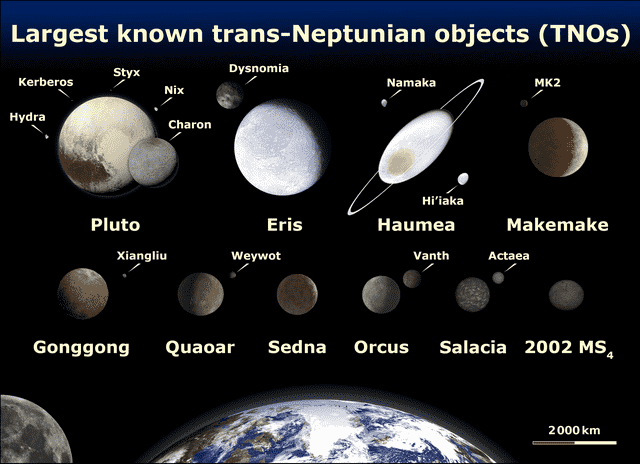The Kuiper Belt is indeed a fascinating region of our solar system, located beyond Neptune and extending to a considerable distance from the Sun. It is often referred to as a “treasure trove” of celestial objects because it contains a diverse range of icy bodies, including dwarf planets, asteroids, and other small objects. Here’s an overview of the Kuiper Belt and what makes it so intriguing:
Location and Definition:
- The Kuiper Belt is a region of the solar system located beyond the orbit of Neptune, typically starting at around 30 astronomical units (AU) from the Sun and extending to about 50 AU or more.
- An astronomical unit (AU) is the average distance from Earth to the Sun, approximately 93 million miles or 150 million kilometers.

Composition of the Kuiper Belt:
- The Kuiper Belt is primarily composed of small icy objects, which are remnants from the early solar system. These objects are made up of a mixture of ices, including water ice, methane ice, and ammonia ice, as well as rocky materials.
- Some of the most famous objects in the Kuiper Belt include Pluto, Eris, Makemake, Haumea, and many others. These are classified as dwarf planets.
Origin and Significance:
- The Kuiper Belt is believed to be a reservoir of primitive, relatively unchanged material from the early days of the solar system. Studying objects in the Kuiper Belt provides valuable insights into the conditions and processes that occurred during the solar system’s formation.
- It is thought that the Kuiper Belt may contain a vast number of objects, potentially numbering in the billions, making it a significant part of the solar system.
Study and Exploration:
- The study of the Kuiper Belt has been greatly advanced by the use of telescopes and space probes. Telescopes like the Hubble Space Telescope have been used to observe and characterize Kuiper Belt objects.
- NASA’s New Horizons spacecraft made a historic flyby of Pluto in 2015, providing the first close-up images and data on this dwarf planet and its moons. New Horizons has continued to explore other objects in the Kuiper Belt beyond Pluto.
Scientific Goals:
- Researchers are interested in the Kuiper Belt for a variety of reasons, including understanding the diversity of objects in the outer solar system, studying the chemical composition of these objects, and investigating their orbital dynamics.
- The Kuiper Belt also holds clues about the early migrations of planets in the solar system and the potential interactions that occurred between these objects and the giant planets.
In summary, the Kuiper Belt is a region of the solar system beyond Neptune that contains a rich assortment of celestial objects, including dwarf planets, asteroids, and icy bodies. It is a treasure trove of scientific information about the early solar system and the dynamics of objects in the outer reaches of our cosmic neighborhood. Ongoing research and exploration continue to unveil the mysteries of this distant and intriguing region.











